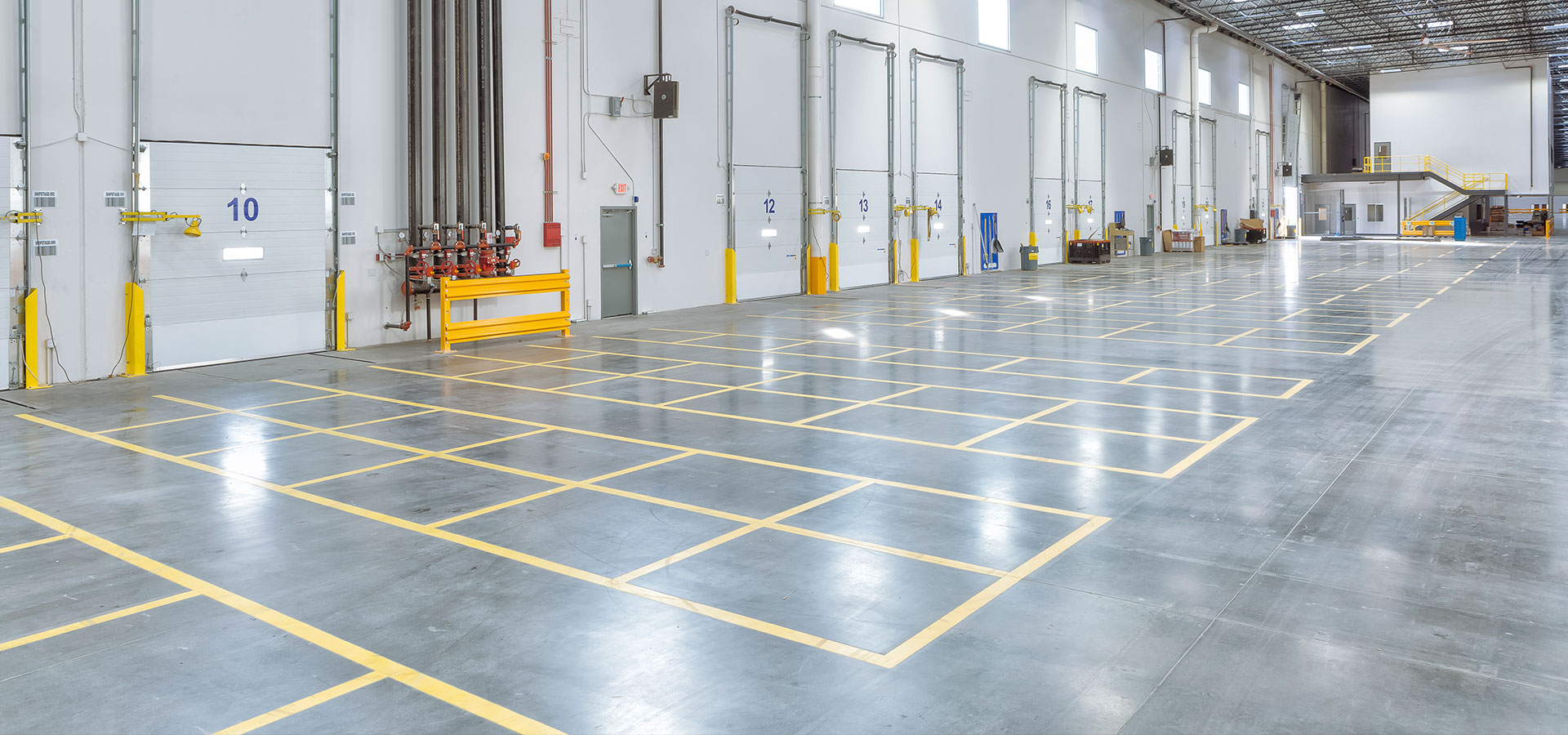The construction success of a distribution center relies on its most critical component, the concrete floor slab. Concrete floors are taking on increased weight-bearing demands as racking capacities expand. Even the slightest imperfection can negatively impact warehouse operations and maintenance. We’re going to discuss the most commonly-used flooring types along with the best ways to mitigate future issues on newly poured concrete slabs.
Across the U.S., a 7” slab-on-grade represents today’s market standard. This option is great for speculative industrial properties when the developer has no client lined up to dictate the design and the load requirements of the facility are unknown. This is the most widely-used option and comes in at the lowest up-front cost.
Build-to-suit developments frequently require a different approach due to customization based on racking systems and the desire for longevity with minimal maintenance. Shrinkage compensating floors are used in many of these cases as they include fewer floor joints, increased density and durability, and virtually no shrinking or curling.
One example of this was used on a large BTS development in California where we used Ductilcrete to handle extreme loads in the warehouse. This option is composed of fiber reinforced concrete which results in reduced thickness of slab and reduced number of control joints. Another option we’ve used on food distribution facilities is a specialty reinforced concrete floor comprised of type K concrete to allow seamless slabs up to 25,000 square feet. We’ve also engaged Fricks, which has a proprietary shrinkage-compensating blend.
All of these options allow for fewer joints resulting in less linear feet to maintain and repair plus smoother movement for forklifts and pallet jacks. This translates to greater employee comfort, reductions in material handle equipment repairs, and less product damage by minimizing the bumps between sections of concrete.
How do we mitigate imperfections the slab? The quality starts before the pour. Our first step is to identify the team with the experience and knowledge for the specific project and location. As part of our quality control efforts, we ensure the soil underneath the slab is well-stabilized. Potential concrete subcontractors are extensively qualified in the bidding process and we typically view sample projects prior to their selection. Once the floors are ready to be installed, we control the size of the pours to ensure our quality control standards are met. It’s imperative this process is not rushed for long-lasting, low-maintenance floors.
With the right team in place, proper design, stable subgrade and well-placed concrete you will have a high-performance concrete floor with minimal cracking and joints for years to come.
